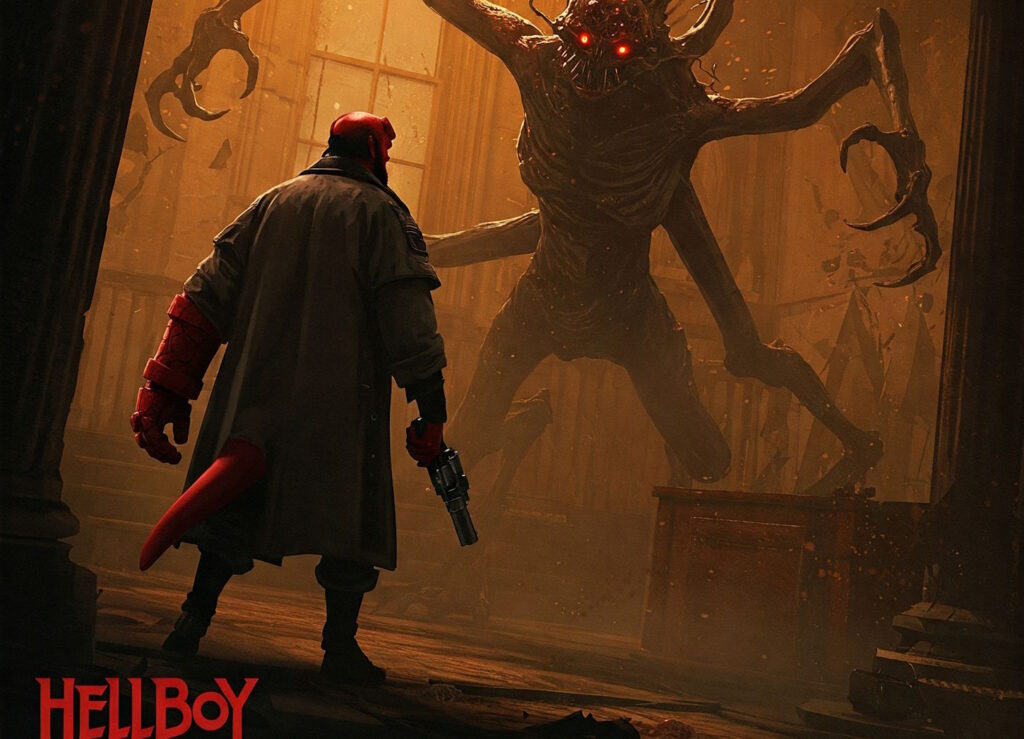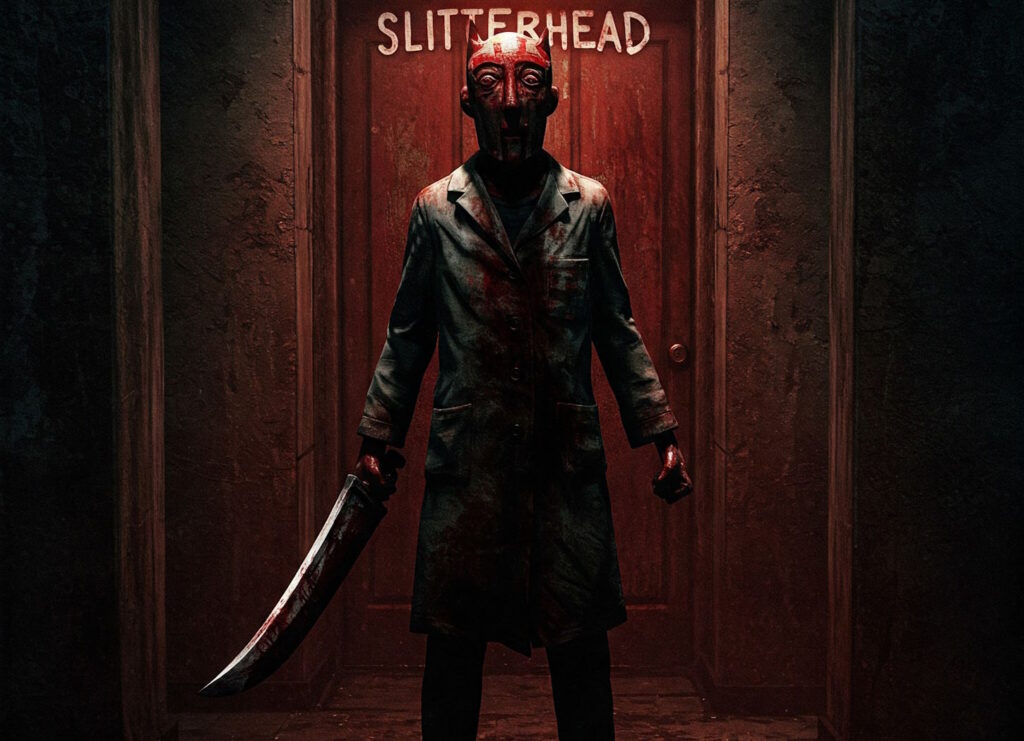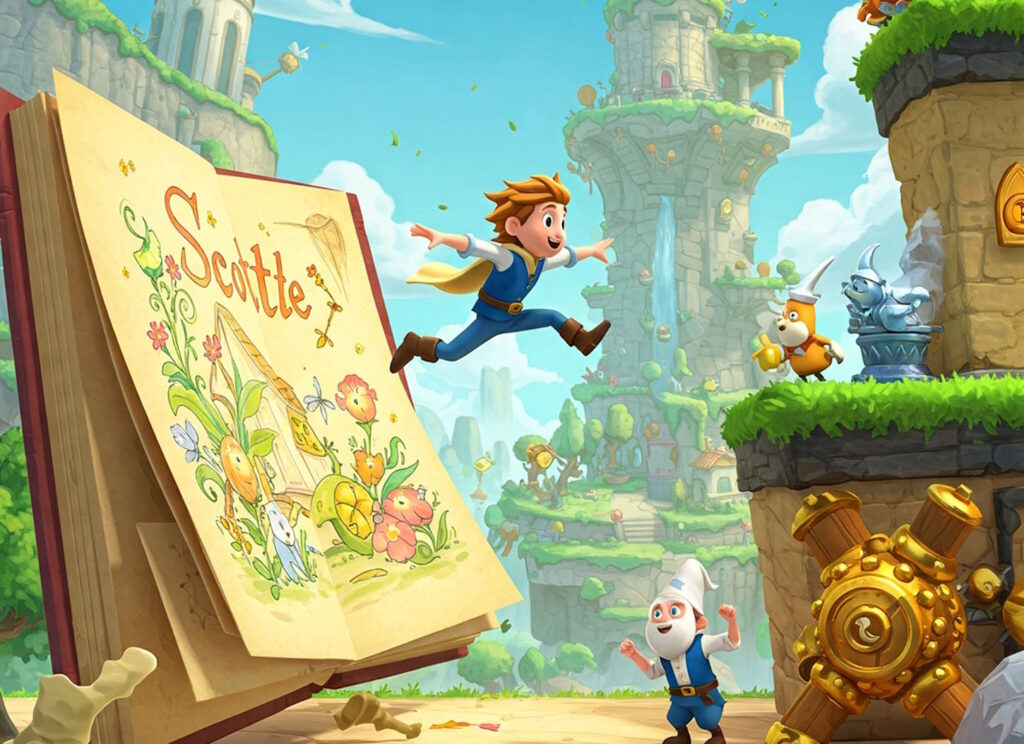Introduction to Hellboy: Web of Wyrd
Hellboy: Web of Wyrd is a video game that draws inspiration from the iconic comic book series created by Mike Mignola, first introduced in 1993. The original comics, which follow the adventures of the titular character Hellboy—a half-demon who works to protect the world from supernatural threats—have garnered a substantial cult following, establishing a significant place within the comic book genre. Mignola’s unique storytelling style, alongside his distinctive art, has influenced a multitude of artists and writers, creating a lasting impact on the landscape of graphic novels.
The anticipation surrounding the release of Hellboy: Web of Wyrd is palpable among fans of the franchise and newcomers alike. This video game adaptation has generated excitement as it promises to bring Mignola’s intricately crafted universe to life through an interactive platform. As gamers prepare to delve into the dark and mysterious world that Hellboy inhabits, many look forward to experiencing the rich lore and intricate storytelling that has made the comics beloved for decades. The game aims to preserve the core elements that fans cherish while modernizing the experience with advanced gaming technology.
In this context, Hellboy: Web of Wyrd serves not only as an expansion of the story established in the comics but as a celebration of Hellboy’s legacy. As players navigate through various missions and face vivid monsters straight from Mignola’s imagination, the game offers a unique opportunity to engage with the narrative in a way that is immersive and thrilling. With expectations running high, the forthcoming release of Hellboy: Web of Wyrd is a testament to the enduring popularity of the comic series, capturing the essence of Hellboy for a new generation of fans and gamers alike.
The Blend of Comics and Gaming
Hellboy: Web of Wyrd effectively captures the intricate relationship between comic book storytelling and interactive gaming. This unique adaptation utilizes narrative structure that hinges on the episodic nature prevalent within the comics. Players are immersed in a series of engaging quests that echo the adventurous plots of the original Hellboy series. Each mission typically mirrors comic story arcs, allowing players to experience the same thrilling narratives that have captivated fans over the years.
The visual style of the game stands out as an homage to the distinct artwork of the Hellboy comics. The graphics are intentionally designed to reflect the comic’s aesthetic, featuring bold colors and expressive character designs that align closely with Mike Mignola’s artistic vision. This attention to visual detail creates a seamless connection between the game and comic book, enhancing the player’s experience and evoking nostalgia for longtime fans. The incorporation of comic book panels and transitions further immerses players, making them feel as though they are part of an unfolding comic book adventure.
Additionally, gameplay mechanics in Hellboy: Web of Wyrd play a vital role in enhancing the storytelling. The combat system is not only engaging but also intuitive, allowing players to make choices that can influence the direction of their journey. This level of interactivity fosters a deeper connection with the characters and the unfolding narrative. Moreover, the game’s use of branching dialogue options mirrors the decision-making often found in comic narratives, allowing players to encounter differing plot outcomes based on their choices. This integration of gameplay mechanics with narrative elements ensures that the gaming experience remains true to the essence of Hellboy, appealing to both comic book enthusiasts and gamers alike.
Gameplay Mechanics and Features
Hellboy: Web of Wyrd distinguishes itself in the gaming landscape through a combination of innovative gameplay mechanics and engaging features that enhance the player experience. Central to the gameplay is an intricate combat system that merges strategic planning with visceral action. Players assume the role of Hellboy and other characters, utilizing a range of combat abilities that are distinct to each protagonist. This allows for a varied playstyle that can accommodate both aggressive and defensive tactics, making battles both challenging and rewarding.
The character abilities in Hellboy: Web of Wyrd are not only diverse but also deeply integrated into the narrative. Each character comes equipped with unique skills that reflect their backgrounds and story arcs, allowing players to customize their approach to encounters. These abilities can be upgraded, offering further personalization and a sense of progression throughout the game. As players advance, they are encouraged to experiment with different combination attacks and special moves, providing an engaging layer of depth in combat scenarios.
Navigating the intricately designed environments is another standout feature of Hellboy: Web of Wyrd. The game presents a variety of settings that are faithful to the comic book’s aesthetic and lore. Players traverse through beautifully rendered landscapes, from dark forests to eerie urban spaces, each filled with secrets and lore. This exploration aspect is complemented by RPG elements that allow players to make choices influencing gameplay and story progression. Decisions made throughout the game can alter character relationships and the unfolding narrative, ensuring that every player’s journey feels unique.
The game’s customization options further enhance player agency, allowing for alterations not just in character appearance but also in abilities and playstyle. This level of detail promotes investment in the characters and the story, keeps gameplay fresh, and encourages replayability as players explore alternative choices and outcomes.
Art Direction and Visual Style
The art direction of Hellboy: Web of Wyrd serves as a compelling bridge between the beloved comic series and the interactive gaming experience. The character designs are meticulously crafted to reflect the unique style established by Mike Mignola, featuring bold lines, exaggerated features, and an unmistakable Gothic influence. Each character is imbued with personality through careful attention to detail, ensuring that even subtle expressions resonate with players familiar with the comics. This thoughtful design approach not only brings Hellboy and his allies to life but also invites new players into the rich narrative universe that has captivated audiences for decades.
Environment art in Hellboy: Web of Wyrd emulates the atmospheric depth found in the original comics. The game’s settings range from dark, eerie landscapes to vibrant yet ominous settings that echo the supernatural themes of the source material. Artists have employed a distinct color palette, utilizing deep reds, murky blues, and earth tones that evoke a sense of both danger and wonder. This careful selection of colors not only enhances gameplay but also deepens the emotional impact of the storytelling, creating an immersive experience that transports players into the world of Hellboy.
Overall aesthetics play a crucial role in establishing the tone of the game, with visual motifs that are instantly recognizable to fans. Elements such as shadowy silhouettes, angular structures, and intricate backgrounds contribute to a cohesive visual narrative. The combination of modern gaming technology and classic comic art results in a striking visual style that honors its roots while appealing to a contemporary audience. By successfully marrying the distinct art style with the interactive medium, Hellboy: Web of Wyrd not only preserves the essence of the comics but also elevates it to new artistic heights.
Character Development and Narrative Depth
In “Hellboy: Web of Wyrd,” character development is a fundamental aspect that enriches the gaming experience. The game engages players in a way that not only adheres to the established lore of the Hellboy comics but also innovates upon it. Central to this is Hellboy himself, whose portrayal maintains fidelity to his personality traits, moral complexity, and iconic attributes. As players navigate through the game’s narrative, they encounter various choices that influence Hellboy’s character arc in nuanced ways, providing a sense of agency typically reserved for choices in traditional storytelling.
Supporting characters also receive commendable attention within the gameplay, enhancing the overall narrative depth. Characters such as Liz Sherman, Abe Sapien, and other familiar faces contribute significantly to the plot, each with their unique backgrounds and motives. The game skillfully positions these characters in scenarios that reflect their established personalities. Their interactions with Hellboy reveal layers of relationships and historical context, allowing players to delve into the intricacies of the Hellboy universe while preserving the essence of what makes these characters resonate with fans.
Moreover, the game employs a compelling method of storytelling that mirrors the serialized nature of comic books. Background lore is seamlessly integrated, allowing players to feel a connection to the comic book canon. This aspect is particularly effective in fleshing out the supporting cast, as their narratives interweave with Hellboy’s journey, creating a rich tapestry that enhances emotional investments in the storyline. By prioritizing character development and narrative depth, “Hellboy: Web of Wyrd” successfully underscores the impact of storytelling within the gaming landscape, proving that video games can serve as a robust medium for exploring complex characters and their relationships.
Music and Sound Design
Hellboy: Web of Wyrd features a meticulously crafted audio landscape that significantly enhances the overall gaming experience. The music, composed by an acclaimed musician familiar with the darker thematic elements of the Hellboy franchise, plays a pivotal role in shaping the emotional backdrop of the narrative. Each piece is thoughtfully integrated into gameplay, capturing the tension and intrigue present throughout Hellboy’s adventures. This orchestral arrangement helps players deeply immerse themselves in the haunting atmosphere, making each moment more impactful.
The sound effects in Hellboy: Web of Wyrd further add to the immersive quality of the game. From the clang of weaponry to the eerie ambient sounds that populate the dark and mysterious environments, each audio detail is designed to heighten the experience. The unsettling growls of monsters and the echo of footsteps in foreboding locations serve as an essential component of the gameplay, creating a sense of presence and urgency. This meticulous attention to sound design not only enriches the storytelling but also keeps players engaged and on the edge of their seats.
Notable collaborations in the realm of sound design include partnerships with talented artists and sound engineers who have worked on various successful projects. Their contributions have ensured that the audio experience of Hellboy: Web of Wyrd resonates with both long-time fans of the comic series and newcomers alike. The combination of the evocative soundtrack and precise sound effects exemplifies how essential audio elements work cohesively to craft a distinctive atmosphere within the game. By prioritizing high-quality music and sound design, Hellboy: Web of Wyrd sets itself apart as a noteworthy title in the comic book game genre.
Fan Reception and Critiques
Upon its release, “Hellboy: Web of Wyrd” garnered considerable attention from both fans of the Hellboy comic series and critics in the gaming community. The initial reception showcased a blend of excitement and apprehension, reflecting the continued anticipation of adaptations from beloved source material. Fans praised the game’s immersive storytelling, which is deeply rooted in Mike Mignola’s iconic comic universe. Several reviews highlighted the way the game captures the essence of Hellboy’s adventures, complete with its dark humor and mythological undertones, allowing players to feel a genuine connection to the source material.
Critics acknowledged the game’s art style, which resonates with the original comic’s aesthetic, as a standout feature. The unique visual approach, reminiscent of a hand-drawn illustration, contributes significantly to the atmospheric experience of exploring Hellboy’s universe. Reviewers noted that the attention to detail in character design and environmental elements plays a crucial role in enhancing the overall interpretation of the comic series.
However, some critiques emerged regarding gameplay mechanics. While many players appreciated the strategic depth and diverse combat options, others expressed concerns about the pacing and repetition in certain levels. Feedback indicated that while the puzzle-solving elements add an engaging layer to gameplay, they can occasionally disrupt the fluidity of action sequences. Additionally, a few controversies arose around the portrayal of certain characters and narratives, which some fans felt deviated from the established lore.
Overall, the reception of “Hellboy: Web of Wyrd” illustrates a complex relationship with its audience, where the charm of the franchise and the desire for innovative gameplay converge, fostering a discussion that reflects both commendation and constructive criticism among fans and critics alike.
Comparisons to Other Adaptations
Hellboy: Web of Wyrd stands out in the realm of comic book adaptations in video games, demonstrating a notable departure from the often lackluster offerings that have characterized this genre. One key area where it excels is in storytelling. Unlike many adaptations that aim to recreate comic narratives without considering interactive elements, Web of Wyrd integrates original narrative threads inspired by Mike Mignola’s Hellboy mythos. This approach not only respects the source material but also enriches the player’s experience, offering fresh perspectives within a beloved universe.
In contrast to adaptations like the 2003’s “Hellboy: The Science of Evil,” which struggled with clunky gameplay and uninspired design, Web of Wyrd delivers a seamless gaming experience. The gameplay mechanics are crafted with precision, featuring an engaging blend of action and strategy that empowers players to explore and interact with the richly detailed environments. This focus on intuitive gameplay differentiates it from other failed adaptations that often compromised fun for fidelity, such as “Green Lantern: Rise of the Manhunters,” which was criticized for its monotonous combat and poor level design.
Visual style is another cornerstone of Web of Wyrd’s success. The game embraces a distinctive artistic direction that mirrors the unique aesthetics of Mignola’s artwork. Unlike games such as “Batman: Arkham Origins,” which followed a more conventional graphic style, Hellboy’s adaptation opts for a visually striking, stylized presentation that enhances the narrative immersion. By learning from the missteps of past adaptations—such as neglecting the visual narrative coherence—Web of Wyrd successfully captures the essence of comic artistry while delivering dynamic gameplay.
Ultimately, Hellboy: Web of Wyrd serves as a benchmark in the genre of comic book video games, illustrating what can be achieved when developers prioritize storytelling, gameplay excellence, and visual integrity. By comparing it to previous adaptations, we can see the formula for success requires a careful balance of these elements, ensuring that players not only engage with the game but also appreciate its roots in the comic book world.
Future of Hellboy in Gaming
The future of the Hellboy franchise in gaming appears to be promising, especially following the positive reception of “Hellboy: Web of Wyrd.” As a comic book game, it has successfully captured the essence of its source material while providing an engaging gameplay experience, setting a high benchmark for potential sequels or expansions. With the rise of interest in comic book adaptations and their integration into video gaming, a well-defined roadmap for Hellboy’s future can be anticipated.
Developers are likely to explore numerous avenues for extending the Hellboy narrative and gameplay mechanics. This could encompass additional downloadable content (DLC) that introduces new storylines, characters, and gameplay environments. A sequel could also take shape by building on the successes of “Web of Wyrd,” perhaps incorporating more complex multiplayer dynamics or expanded customization options for players. This type of evolution in the game structure would resonate well within a community that thrives on exploration and character development.
The sustainability of the comic book gaming genre seems increasingly feasible, especially with the continued popularity of graphic novels and comic book franchises in mainstream media. The integration of such narratives into interactive experiences is resonating well with audiences, and Hellboy stands as a key player in this trend. As players seek immersive worlds that allow for exploration of beloved characters, the Hellboy game series could establish itself as a staple within this genre.
Furthermore, the ongoing success of Hellboy games may influence future adaptations of other comic book properties into the gaming space, signaling a broadening respect for storytelling that combines these two mediums. Fans can hope for refined gameplay, enriched storylines, and a vibrant gaming community that celebrates the unique universe of Hellboy as it continues to evolve.



